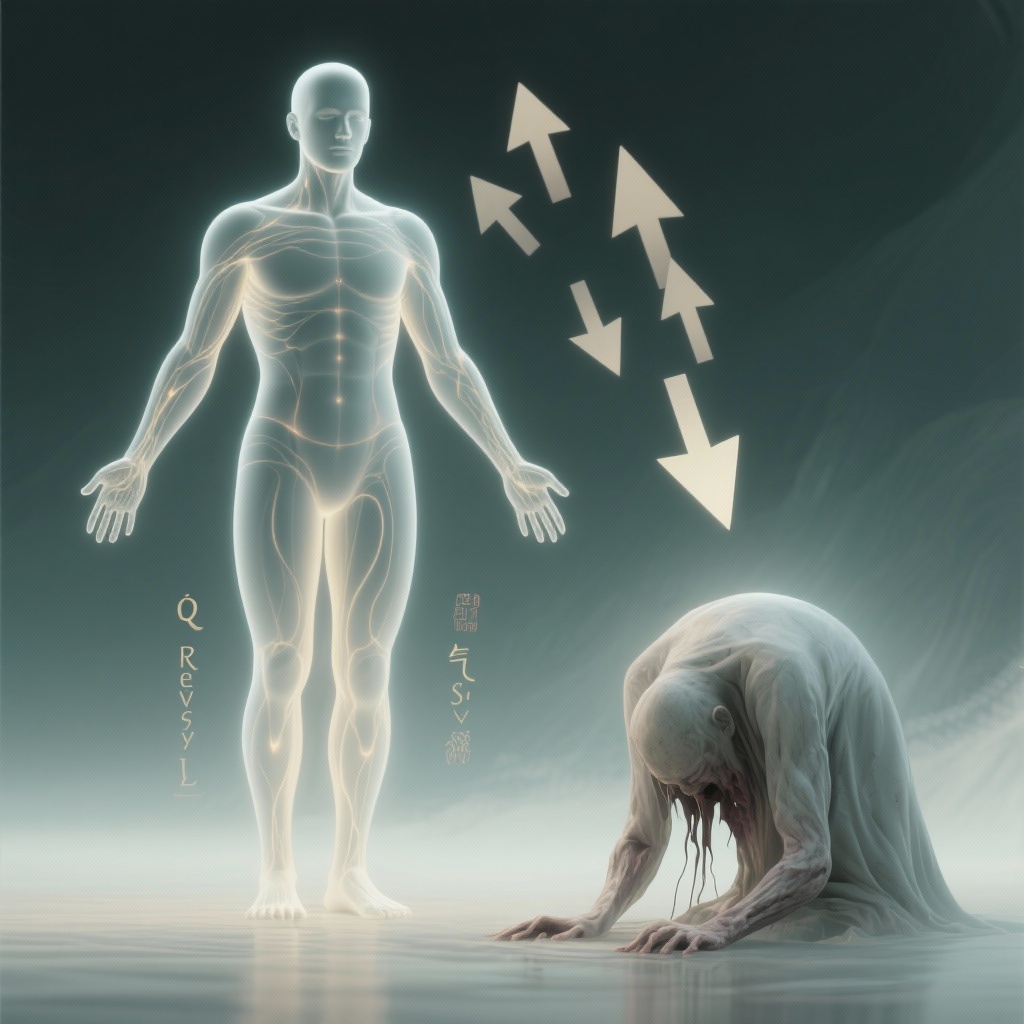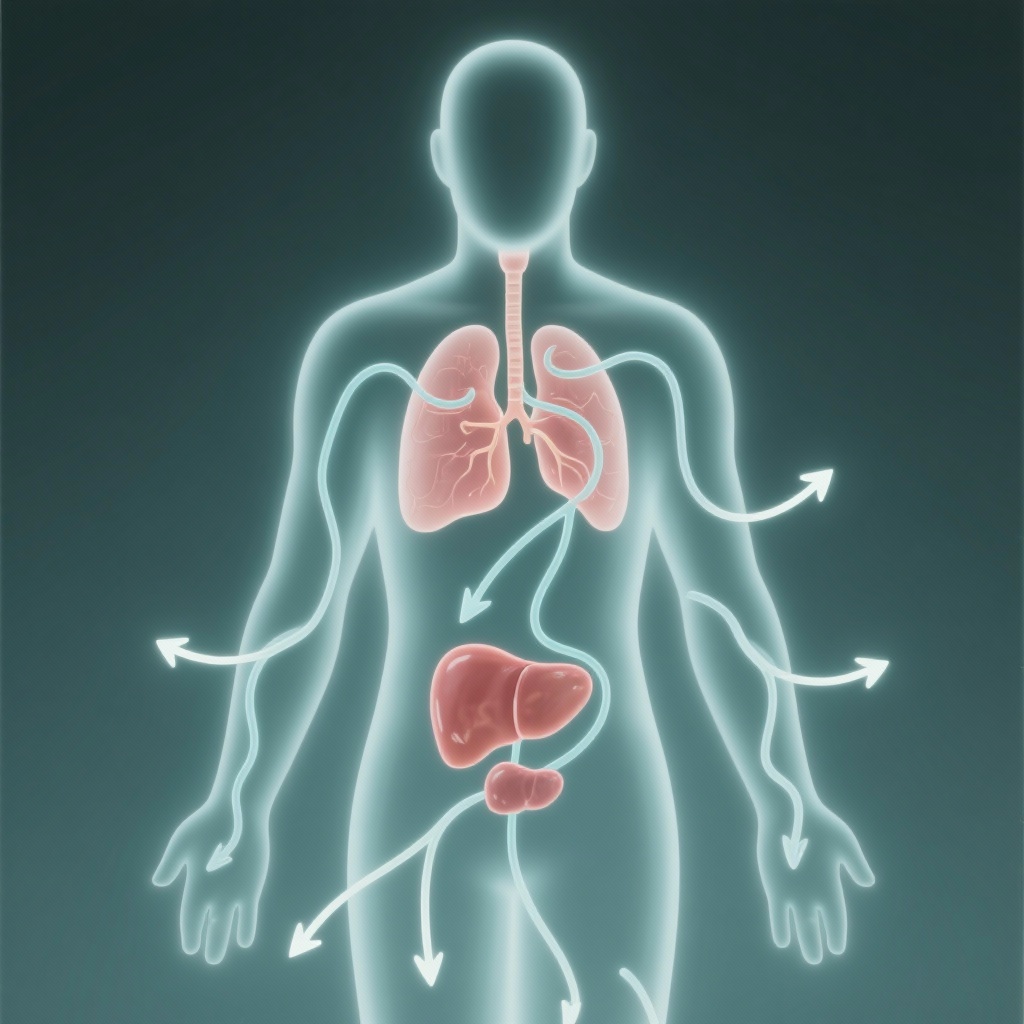Master Your Internal Flow: Unraveling Qi Reversal Qi Sinking
In Traditional Chinese Medicine (TCM), your body’s vital energy, known as Qi, must flow in specific directions. This precise movement is absolutely essential for maintaining optimal health and proper bodily functions. Normally, Lung Qi and Stomach Qi descend smoothly downwards, ensuring digestive and respiratory health within your system. Conversely, Liver Qi and Spleen Qi naturally rise, actively maintaining your internal balance (Huangdi Neijing). Think of it like a city’s complex traffic grid. Specific lanes guide cars in fixed directions efficiently. When Qi Reversal Qi Sinking occurs, these vital energy flows go completely haywire. This internal disruption creates uncomfortable and often confusing symptoms.

Grasp the Basics: Know Your Body’s Energy Paths
Qi reversal happens when Qi, which should move downwards, rushes upward instead. This feels much like a traffic jam moving the wrong way inside your body. This upward surge creates a feeling of intense internal pressure. Stomach Qi rising is a very common issue many people experience. Its symptoms often include nausea, persistent hiccups, acid reflux, and a burning sensation in the chest. If Lung Qi rises, expect a forceful cough, shortness of breath, and sometimes breathing difficulties. Liver Qi rising manifests as headaches, dizziness, a flushed face, irritability, and elevated blood pressure (PMID: 29505432). Patients frequently report an uncomfortable upward rush of energy. They also often experience significant chest tightness.
Identify the Upward Rush: Recognize Rebellious Qi
Qi sinking occurs when Qi, meant to ascend, instead drops downwards. This resembles a deflated hot air balloon inside your system. This downward pull creates a noticeable sensation of heaviness. Spleen Qi sinking is the most classic example of this condition, often linked to weak digestion. It frequently leads to chronic diarrhea, loose stools, rectal prolapse, and even uterine prolapse. Patients commonly feel a distinct heavy, dragging sensation throughout their body. They experience general weakness, low energy, and a lack of vitality. It is as if their body lacks proper upward support.
Spot the Downward Pull: Understand Collapsed Qi
Qi reversal symptoms largely concentrate in the upper body. They usually show an upward rushing sensation. Conversely, Qi sinking symptoms mostly affect the lower body. They present as a distinct downward dragging feeling. Those with rebellious Qi patterns often appear agitated and overly excited. In contrast, individuals experiencing sunken Qi conditions typically seem weak and lethargic. Recognizing these fundamental differences is absolutely key to proper diagnosis.

Compare the Currents: Distinguish Your Symptoms Clearly
Treating Qi reversal requires guiding the rebellious Qi downwards and calming its upward surge. Herbal remedies like Pinellia, Dried Tangerine Peel, and Inula flower are often employed for this purpose. These botanicals help redirect the energy flow correctly within your body. Research suggests these herbs can help regulate gastrointestinal motility (PMID: 25170341). Additionally, acupuncture or massage on acupoints like Neiguan (PC6) and Zusanli (ST36) can promote downward movement effectively. This strategic intervention works by gently pushing the body’s energy in the right direction. Discover more about balancing your body’s vital energy at /tcm-basics/qi-blood/.
Calm the Surge: Direct Rebellious Qi Downwards
Addressing Qi sinking demands lifting the collapsed Qi and strengthening the body’s upward energetic support. Herbs such as Astragalus, Black Cohosh, and Bupleurum are traditionally used to achieve this restorative effect. These powerful botanicals work to counteract the downward pull effectively. Furthermore, specific acupoint massage or acupuncture on Baihui (GV20) and Qihai (CV6) can help raise and stabilize Qi. This careful approach helps restore your body’s natural upward momentum. Explore more options for strengthening your energy with Qi Tonic Foods.
Lift the Collapse: Boost Your Upward Energy
If you experience conditions like Qi Reversal Qi Sinking, prioritizing emotional tranquility is essential. Avoid intense anger or irritability, as this worsens rebellious Qi patterns quickly. Maintain a light, simple diet for optimal digestion and comfort daily. For sunken Qi conditions, focus on boosting your nutrition and engaging in moderate activity. Avoid overworking yourself, as this can significantly worsen Qi flow disruptions. Deep breathing exercises regulate abnormal Qi dynamics effectively. Tai Chi also helps balance both upward surging Qi and downward collapsing Qi (PMID: 35140882). These practices are key for addressing imbalanced Qi movement and the underlying vital energy imbalance.
Support Your System: Embrace Daily Wellness Habits
Understanding the distinct manifestations of upward surging Qi and downward collapsing Qi empowers you to accurately assess your health situation. This knowledge allows you to choose the most appropriate self-care and treatment methods available. Identifying these Qi flow disruptions helps guide effective vital energy imbalance wellness strategies. Recognizing Qi Reversal Qi Sinking patterns is crucial for your overall well-being.
References
(Huangdi Neijing: The Yellow Emperor’s Classic of Medicine, foundational text of TCM)
(PMID: 29505432: Study on Liver Qi Stagnation and related symptoms)
(PMID: 25170341: Research on traditional herbs regulating gastrointestinal motility)
(PMID: 35140882: Benefits of Tai Chi for various health conditions)
Quick Self-Check & Self-Rescue in Seconds!
Feeling off but not sure why? Here’s a rapid way to check and act:
- If you constantly feel a rush upwards, like frequent heartburn, persistent hiccups, or sudden irritability → immediately try slow, deep diaphragmatic breathing for 30 seconds. Focus on extending your exhale.
- If you feel heavy, constantly tired, and experience noticeable “sagging” (e.g., chronic loose stools, a persistent dragging sensation, or even mild organ prolapse) → immediately practice gentle, upward abdominal massage around your navel for 30 seconds to encourage lifting.
Medical Disclaimer:This article is for educational use only and is not a substitute for professional medical advice.